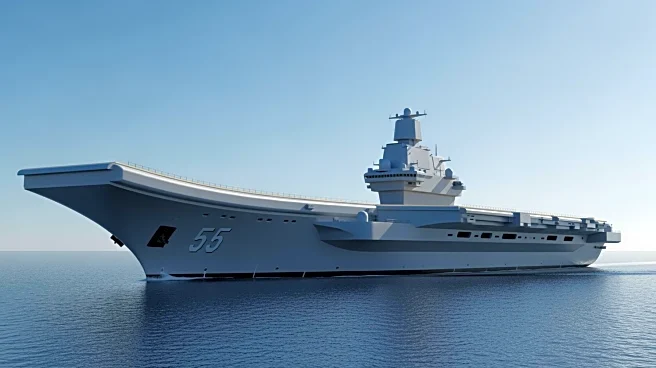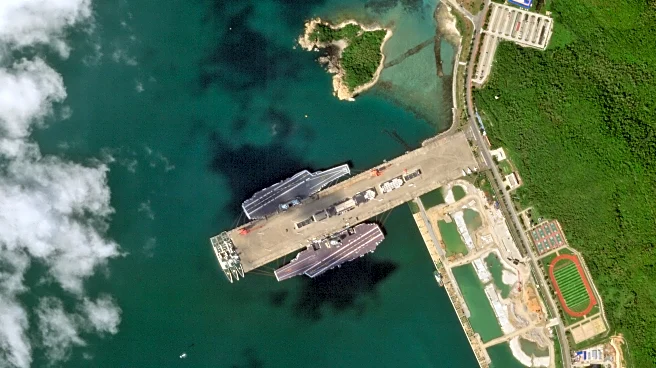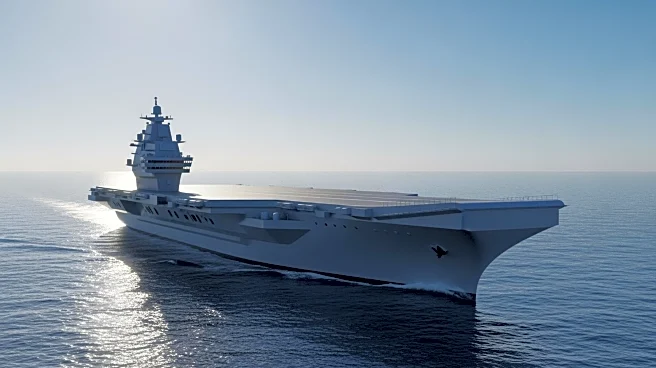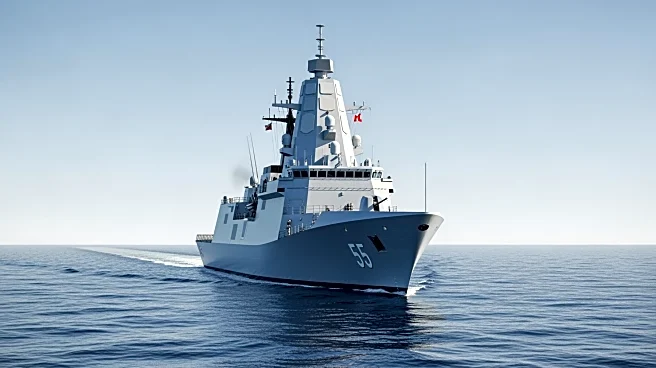What's Happening?
China has commissioned its latest aircraft carrier, the Fujian, after extensive sea trials. The carrier, designed and built domestically, represents a significant step in China's military expansion, aiming
to modernize its forces by 2035. The Fujian is equipped with advanced technology, including an electromagnetic launch system, allowing it to project power far beyond China's coastal waters. This development is part of China's broader strategy to contest control in the Indo-Pacific region and challenge U.S. naval dominance.
Why It's Important?
The commissioning of the Fujian marks a pivotal moment in China's military strategy, as it seeks to enhance its global presence and influence. The carrier's capabilities could alter the balance of power in the Indo-Pacific, impacting U.S. military operations and alliances in the region. China's growing naval power poses strategic challenges for neighboring countries and the U.S., potentially reshaping geopolitical dynamics and security policies.
What's Next?
China's naval expansion will likely prompt responses from other nations, including increased military cooperation and strategic planning to counterbalance China's influence. The U.S. and its allies may enhance their naval capabilities and presence in the region to maintain stability and deter potential conflicts. Diplomatic efforts and negotiations could also play a role in addressing the implications of China's military advancements.
Beyond the Headlines
The development of the Fujian reflects China's ambition to become a leading global power, with military capabilities that support its economic and political goals. The carrier's commissioning highlights the intersection of technology and military strategy, as nations invest in advanced systems to gain strategic advantages. The implications of China's naval expansion extend beyond military considerations, influencing trade routes, economic partnerships, and international relations.












